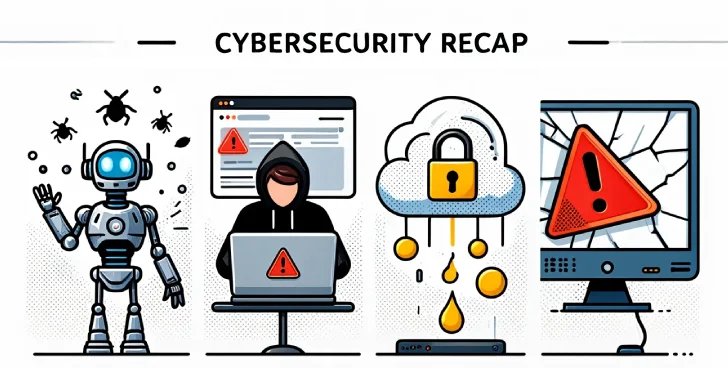Top Highlights
-
Cyber Threat Landscape: Modern cyber threats are multifaceted and require proactive detection of early warning signs rather than just reacting to alerts, with layered strategies observed in emerging malware campaigns like Lumma Stealer and DanaBot.
-
Malware Distribution Methods: Threat actors are leveraging popular platforms such as TikTok to distribute malware through AI-generated videos, demonstrating their agility in using social media trends for malicious purposes.
-
Targeted Cyber Attacks: State-sponsored campaigns, particularly by groups like APT28 and UNC5221, are actively targeting Western industries and exploiting critical vulnerabilities in software systems to execute espionage and theft operations.
- Emerging Threats and Security Gaps: Flaws in widely used software and tools, such as GitLab and DICOM, pose serious security risks, emphasizing the need for vigilant patch management and user awareness to combat sophisticated cyber attacks and maintain organizational security.
Key Challenge
On May 26, 2025, cybersecurity journalist Ravie Lakshmanan reported a significant development in the ongoing battle against cybercrime, specifically highlighting the dismantling of malicious infrastructures associated with the Lumma Stealer and DanaBot malware. This operation, part of a broader initiative termed Operation Endgame, resulted in the disruption of 2,300 command-and-control domains tied to Lumma, alongside the arrest of 16 individuals charged with developing DanaBot. Notably, DanaBot is categorized as a manipulation tool that siphons sensitive data while allegedly aligning with Russian state-sponsored operations, illustrating how traditional malware can be rechanneled to serve political objectives.
The increased complexity of cyber threats today underscores the necessity for proactive cybersecurity strategies, shifting from reactive measures to early detection of potential threats. The urgency is emblematically represented through the capture of malicious actors leveraging popular social media platforms for nefarious purposes, including distributing malware under the guise of legitimate software. Such incidents demonstrate a chilling evolution of cybercrime tactics and the persistent need for vigilant oversight by cybersecurity teams, governments, and law enforcement authorities to stay a step ahead in this relentless digital warfare.
Potential Risks
The material risks posed by the recent cybersecurity breaches, particularly from the likes of Lumma Stealer and DanaBot, extend far beyond individual organizations, threatening the stability of a wide array of businesses, users, and institutions. When critical systems are compromised, it creates a cascading effect: businesses lose customer trust, leading to decreased sales and potential bankruptcy, while users suffer from identity theft, financial loss, and psychological distress. Furthermore, the disrupted operations of one company can cripple supply chains, diminishing the functionality of allied organizations, particularly those relying on shared data or services. The implication is clear: as attackers continue to evolve their methodologies, the interconnectedness of digital infrastructures amplifies the fallout from successful cyberattacks, calling into question the resilience of not just the targeted but also the broader ecosystem, thereby accelerating calls for more stringent cybersecurity measures across the board.
Possible Next Steps
In an age when cyber threats proliferate at an unprecedented pace, timely remediation becomes paramount for safeguarding sensitive information and maintaining operational integrity.
Mitigation Steps
- Regular software updates
- Intrusion detection systems
- Endpoint protection solutions
- Data encryption
- User education and training
NIST CSF Guidance
The NIST Cybersecurity Framework underscores the necessity for swift incident response and proactive risk management. For more detailed mitigation strategies, refer to NIST Special Publication 800-61, which offers comprehensive guidance on Computer Security Incident Handling.
Advance Your Cyber Knowledge
Discover cutting-edge developments in Emerging Tech and industry Insights.
Learn more about global cybersecurity standards through the NIST Cybersecurity Framework.
Disclaimer: The information provided may not always be accurate or up to date. Please do your own research, as the cybersecurity landscape evolves rapidly. Intended for secondary references purposes only.
Cyberattacks-V1

